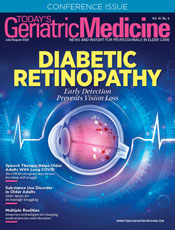
July/August 2023
The Last Word: Suicide Pacts and Murder-Suicides What Geriatric Professionals Should Know Honolulu: An elderly couple died of gunshot wounds in an assisted living facility where the 86-year-old woman resided. Her 92-year-old husband was visiting when he killed her and turned the weapon on himself. Tucson, Arizona: A couple in their late 70s, married more than 50 years, took their lives together. The wife suffered from a painful rheumatic condition and dementia and had been cared for by her husband. The first case is a murder-suicide; the second is a suicide pact. People often confuse these types of occurrences, which are sometimes similarly motivated. Advanced age of the victims is a feature common to each, which is what makes an understanding of these acts imperative to those who work with older adults. There are about 600 murder-suicides yearly in the United States. Sixty-five percent involve intimate partners. Men in their 70s commit about one-third of US murder-suicides. Older women account for most of those murdered. A typical perpetrator is a depressed older man with worsening health problems who is the caregiver for an increasingly dependent spouse. Older adult murder-suicides may also be rooted in longstanding domestic violence or abuse. In a suicide pact, two or more individuals associated in some way agree to take their lives together, in close proximity in time and place, using similar means, for the same reason. Less than 1% of all suicides are part of pacts. Texts, notes, or other references left by the decedents confirm the existence of a suicide pact. Notes are the most frequent indicator. Common means and co-occurrence of the deaths are also markers. With few exceptions, suicide pacts rely on less violent methods than murder-suicides. Most murder-suicide deaths are by firearms, while those in suicide pacts are due to ingesting or inhaling toxic substances. A suicide pact begins when two individuals conclude that dying together is preferable to living. A depressed older man may influence his female partner to join him in suicide. Suicide pacts are planned acts and may even be rehearsed, like some solo suicides. Suicide pact participants tend to be older adults, who are married, in a civil union, or in a domestic partnership, with less incidence of mental illness than that which occurs in single suicides, and tend to rely on prescribed opiate medications as the means. Life-changing situations seen as unfavorable or inescapable may trigger suicidal thoughts in older adults. Ideation may be the starting point for both murder-suicides and suicide pacts among older adults. Little guidance is available on recognizing the potential risk of murder-suicide or a suicide pact in older adults. However, many of the signs of suicide risk in older adults apply to compound suicides. These include the following: • comorbid medical/neurological illness; Older adults at high risk of murder-suicide or enacting a suicide may betray signs such as clearly threatening to die by suicide, voicing a specific suicide plan, and actively looking for or finding lethal means. When an older adult is felt to be at risk of suicide, it may be appropriate to ask if their plan involves someone close to them willingly or unwillingly dying with them. Similarly, two withdrawn older adults in a close association, one or both of whom see themselves facing prospects they regard as intolerable, should be screened for suicide risk. Initiating meaningful suicide prevention directed at older adults in the community and long term care settings may deter suicidal behavior in all forms in this population. Greater awareness of suicide risk and routine risk screenings by providers may also help. — Tony Salvatore, MA, is on the staff of Montgomery County Emergency Service, a nonprofit mental health crisis service provider in Norristown, Pennsylvania. |
